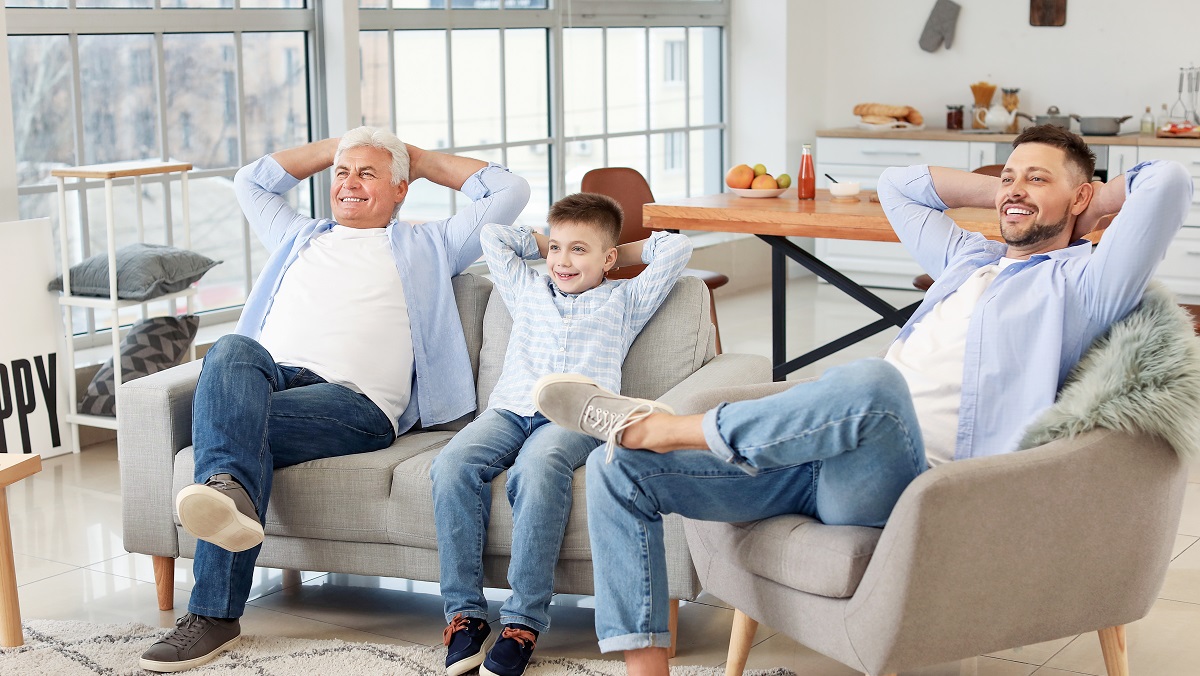Ask any student, young professional or member of ‘generation rent’ what matters most in their day-to-day lives, and odds are they won’t mention the decor of their sitting room.
If anything, being houseproud is a little out of fashion. The image of the 1950s housewife fussing over sofa cushions looks increasingly sexist to the modern eye, while the trope of picture-perfect suburbia has been ruthlessly savaged by films like Fight Club and American Beauty.
But perhaps we’ve been too hasty. The GoodHome Report, a study carried out by the Happiness Research Institute, suggests our homes play an unexpectedly large part in our day-to-day wellbeing.
“Frankly, I’m surprised we haven’t looked at this before,” says Meik Wiking, CEO of the Happiness Research Institute and author of The Little Book Of Hygge, “given that homes are where we spend more time than anywhere else”.
The largest study of its kind
You could be forgiven for approaching the findings with a certain scepticism – defining happiness is always tricky, let alone isolating its domestic causes – but Mr Wiking says it’s the largest, most comprehensive study of its kind.
“The study spanned 10 different countries and 13,500 people,” he explains, “and it showed a lot of common denominators. We looked at in-home factors like favourite rooms, inviting people over, emotional responses and so on, but also broader factors like age, gender, income and home ownership.”
Read more: Retiree home ownership is about to plummet
What they found was that home-related emotions accounted for roughly 15 per cent of overall happiness, more than health and fitness, and more than income. “When you think about how many different factors impact our overall happiness, be it employment, money, relationships genetics, I think 15 per cent is surprisingly high,” says Mr Wiking.
Five emotional states
The report highlights five major emotional factors that play into creating a happy home. The first is ‘pride’ – having a home that you’re happy to call your own, and might actively enjoy showing to other people. “Pride is the end goal,” says Mr Wiking. “It’s what you want people to feel once they’ve finished creating the home of their dreams.”
Secondly, there’s ‘comfort’, having a home in which you feel able to relax and decompress. “In these turbulent times, we like to have a place to let our guard down, and feel energised to take on the world once more,” says Mr Wiking.
Third is ‘control’ – a sense of self-determination over your living arrangements – and fourth is the hopefully self-evident ‘safety’. The fifth and final aspect is ‘identity’ – living in surroundings that you feel reflect you as a person and reflect your story.
Domestic myth busting
These qualities cropped up time and again, but perhaps more surprising are the ones that didn’t. First on the myth-busting block – size matters. “Big homes don’t equal big happiness,” says Mr Wiking. “It’s a common misconception but it doesn’t matter how big your house is on paper. It’s more how your home feels.”
Mr Wiking suggests rearranging furniture, regularly decluttering, and employing savvy storage. Finely furnished flat beats messy mansion every time.
Read more: Declutter your life and save
Perhaps surprisingly, renters were as satisfied as owners. “A lot of people think you need to own your home in order to be happy,” says Mr Wiking, “and that’s just not the case. So long as you have a landlord who allows you to do some of the things you want to do.”
In other words, it’s what you do with your home that makes the difference – what steps you take to make it your own – rather than what’s already there.
What can you do?
Well, first of all you can wait. “We become happier with our homes as we age,” says Mr Wiking, “particularly at 50 or above. At that time, people tend to be more settled in, more competent, and more aware of their own priorities.”
Assuming you’d like more immediate results, there are a few things that seem to work for everyone. “Green is always good,” says Mr Wiking, “whether it’s balconies, gardens or house plants in your living room, greenery has a positive impact. Social homes tend to be happier homes – invite people over and make your home a hub.”
Read more: Are house plants the new wellness trend?
In the end, though, the happiest homes are those that have been personalised, and the survey found that householders that had pursued home improvements were markedly happier with the results.
“The overall conclusion is to make time for change and build up the courage to do something with your home, whatever that may be,” says Mr Wiking. “Prioritising your home – that’s the best thing people can do.”
Are you a homeowner or renter? How happy do you feel at home? How have you made your house feel like home?
– With PA
If you enjoy our content, don’t keep it to yourself. Share our free eNews with your friends and encourage them to sign up.

